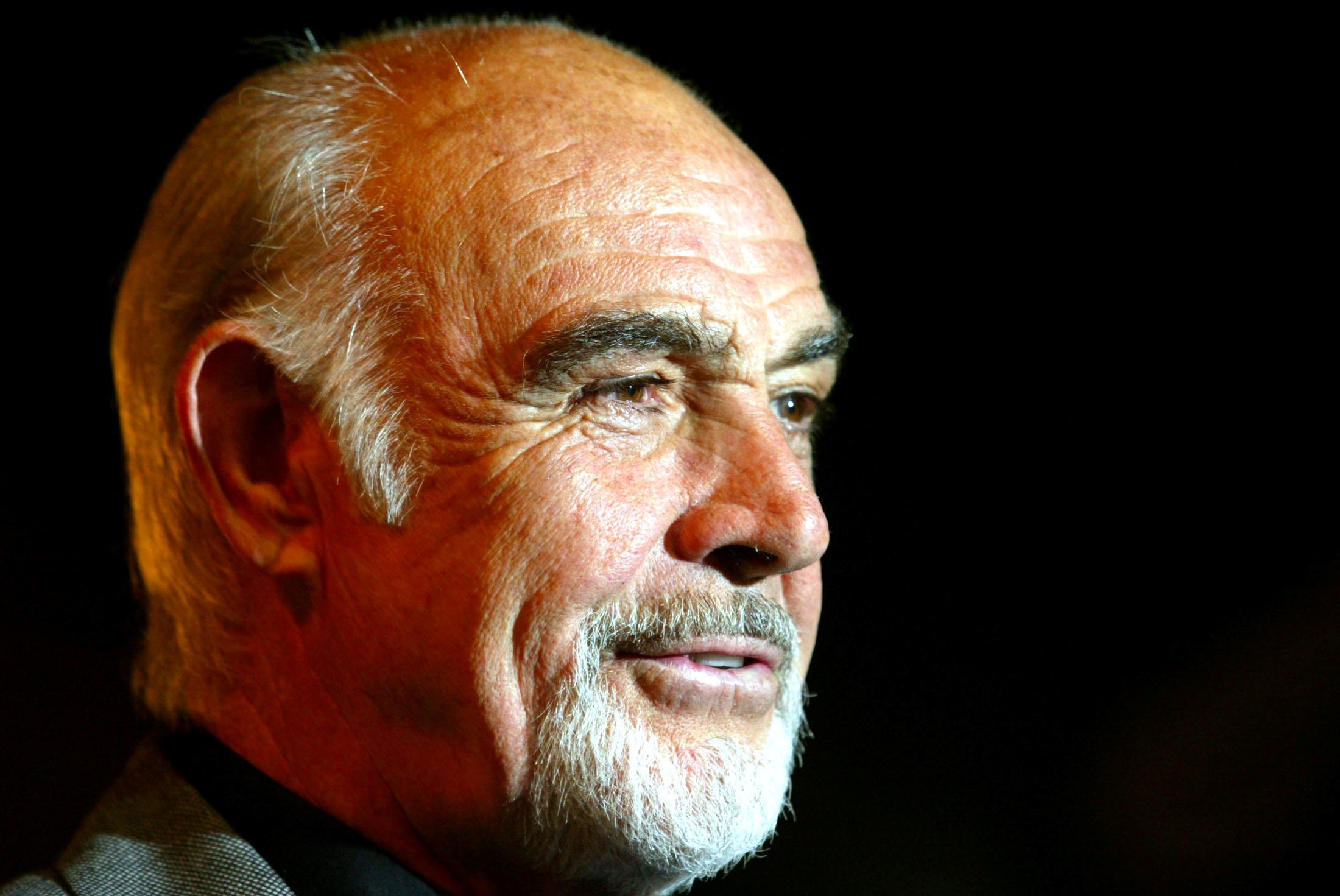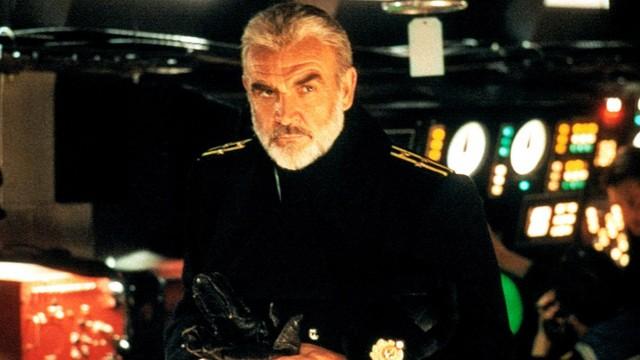Remembering Sean Connery

With the passing of Sir Sean Connery, the world of film has lost a legend. Rising to international fame as James Bond in 1962’s “Dr. No” (a role he would play in six more films until 1983) Connery transcended the image of the super spy over the next five decades with a number of memorable characters across a number of genres.
While the image of Connery as a suave secret agent will live in cinematic immortality, it was about as far removed from his working-class upbringing as it could get. Born Thomas Sean Connery on August 25, 1930, in Edinburgh, Scotland, the man who would be Bond had a somewhat varied resume in his early years, including milk delivery man, lifeguard, truck driver, laborer, and coffin polisher.
After a short stint in the Royal Navy (from which he was discharged for medical reasons), Connery pursued a brief career in bodybuilding and modelling that saw him compete in 1953’s Mr. Universe competition.
During the contest, Connery learned of auditions for a travelling production of Rogers and Hammerstein’s “South Pacific,” which resulted in his being cast as part of the chorus. The move to acting coincided with Connery’s retirement from bodybuilding, as his affinity for football (soccer) prevented him from building up the mass he needed for serious competition.
Apparently, Connery was talented enough on the pitch to have been offered a spot in no less than Manchester United by team manager Matt Busby, but turned down the contract over concerns that, at 23, he was too old to begin an athletic career.
From “South Pacific,” Connery appeared in more plays, followed by small parts in film and TV. Soon, he was starring in movies like 1958’s “Another Time, Another Place” (opposite Lana Turner), and Disney’s 1959’s Irish fantasy, “Darby O’ Gill and the Little People,” where he was spotted by Hollywood producer Albert R. Broccoli.
Broccoli kept the young actor in mind as he was developing a film series based on Ian Fleming’s bestselling James Bond novels.
_2020_11_02_14_44_24.jpeg)
While Broccoli was convinced, author Fleming (who had loosely based Bond’s character on himself) didn’t believe that his debonair creation should be portrayed by a man who’d grown up tangling with Edinburgh street gangs. “He’s not what I envisioned of James Bond looks,” Fleming was quoted at the time. “I’m looking for Commander Bond, and not an overgrown stuntman.”
The job of transforming Connery into 007 fell to director Terrence Young, who took Connery under his wing. A connoisseur of the so-called “finer things in life,” Young outfitted Connery in a tailored suit from his personal outfitters at Turnbull and Asser (which he was made to wear – even to bed – until he was comfortable in it), and taught him how to act, walk, and talk like a gentleman.
The only thing Young didn’t need to teach was the raw, masculine sex appeal that Connery naturally exuded. And so, with Fleming’s words for inspiration, and Young for polish in front of and behind the camera, Sean Connery was introduced to the world as James Bond in 1962’s “Dr. No.”
The rest, as they say, was history. The film went on to become a box office smash, with Connery’s sly, rugged take on the sharply-attired character winning over audiences worldwide. While critics were divided on the film, Connery’s performance was praised, impressing even Fleming, who retroactively gave the character a Scottish heritage in his 1963 novel, “On Her Majesty’s Secret Service.”
By the third film, “Goldfinger," 007 was a full-blown phenomenon, with theaters forced to stay open 24 hours to meet audience demand.
Connery tried to escape the shadow of 007 by acting in Alfred Hitchcock’s psychological drama, “Marnie” (1964), but the pressures (and lack of privacy) that came with being the world’s most famous actor took a toll on the man.
By the time of “Thunderball” (1965), and “You Only Live Twice” (1967), Connery had had enough and walked away from the role to return only once, in 1971’s lackluster “Diamonds Are Forever” on the promise of a then-record US $1.25 million pay day.
While he would return in the equally lackluster (and completely unofficial) “Never Say Never Again” in 1983, Connery was, for all intents and purposes, done with the role that made him a star.
In the 1970's, Connery worked double time to avoid being typecast, playing everything from a post-apocalyptic (and scantily-clad) warrior in the bewildering “Zardoz” (1974), to a middle-aged Robin Hood opposite Audrey Hepburn as Marian, in “Robin and Marian” (1976).
_2020_11_02_14_47_08.jpg)
He also appeared in more well-regarded roles in dramas such as “Murder on the Orient Express” (1974), “The Man Who Would Be King” (1975), and “A Bridge Too Far” (1977). While still a respected performer, none of Connery’s films from this period would reach the heights of his 007 heyday.
By the 1980's, Connery was no longer a dashing male lead, gradually transitioning to playing mentors and authority figures, to great success, in films like “In the Name of the Rose”” (1986) and “Highlander” (1986), while his turn as a veteran Chicago cop in Brian De Palma’s “The Untouchables” (1987) would earn him an Academy Award for Best Supporting Actor.
Connery would return to blockbuster fare with “Indiana Jones and the Last Crusade” (1989), brilliantly portraying the hero’s father, despite being only 12 years older than co-star Harrison Ford. That same year, Connery gained even more mainstream attention when, at the age of 59, he was declared People Magazine’s "Sexiest Man Alive".
Until his retirement in 2003, Connery balanced dramatic roles with blockbusters, kicking off the '90s as a Russian submarine commander in the Jack Ryan thriller, “The Hunt for Red October.”

While films like “The Rock” (1996) and “Entrapment” showed that he was still a credible action lead, titles like “Finding Forrester” (2000) let him show off his thespian side. It was during this period that Connery turned down roles in “The Matrix Reloaded” (as The Architect) and “The Lord of the Rings” (as Gandalf), allegedly on account of not understanding what they were about.
An attempt to make up for these missed opportunities caused Connery to accept the lead in “The League of Extraordinary Gentlemen” (2003), a monumental flop that proved so stressful to make, it turned him off on the idea of acting altogether.
While there were rumors that he would return in some capacity for the fourth Indiana Jones film, Connery found the proposed role unessential to the overall plot, and famously declared his retirement as being, “Just too much damned fun.”
Freed from his Hollywood responsibilities, Connery was able to fully embrace his love for golf (learned on the set of “Goldfinger”), moving into a luxurious home in the Bahamas within walking distance of a world-class course. As stated in his 2009 autobiography, “Being a Scot”: “I began to see golf as a metaphor for living, for in golf you are basically on your own, competing against yourself and always trying to do better.”
It was in that Bahamanian home that Connery passed away, peacefully, in his sleep on October 31, 2020, at the age of 90. According to his widow, the actor suffered from dementia in his final years.
Throughout his life, Connery was vocal in his political views (one of his tattoos reads, “Scotland Forever”), publicly donating to political parties and causes supporting Scottish independence. Indeed, his stance raised more than a few eyebrows when he was knighted by Queen Elizabeth II in 2000 (for services to film and drama). A hero to his countrymen, Sir Sean Connery would often appear in public in full kilt. Following his passing, Connery was praised by Scotland's First Minister, who proclaimed the actor, "a global legend but, first and foremost, a patriotic and proud Scot...a lifelong advocate of an independent Scotland and those of us who share that belief owe him a great debt of gratitude.”
While the man’s patriotic love of his homeland was unquestionable, he will best be remembered by legions of fans for the lifetime of big screen memories he left behind. Whether it was as 007 or his multitude of other roles, Sean Connery was an indelible performer, and one of the last, truly great silver-screen icons.
Rest in Peace, Sir Sean.
— LA, GMA News



